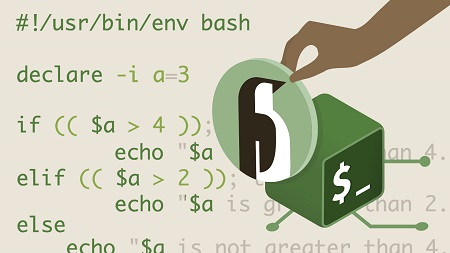
English | MP4 | AVC 1280×720 | AAC 48KHz 2ch | 2h 05m | 266 MB
Bash, or the Bourne Again Shell, is a widely popular command-line interpreter for administration and programming tasks. But Bash is different than most scripting languages. That’s why Scott Simpson spends some time in this course running you through the syntax—introducing variables, numbers, and control structures—so you can start writing scripts right away. He shows you how to wrap up multiline operations in one file, implement flow control, and interact with users to get input. Plus, he offers challenges along the way that allow you to put what you’ve learned to the test.
Topics include:
- What is Bash?
- Understanding Bash script syntax
- Creating a basic Bash script
- Displaying text with “echo”
- Working with numbers, strings, and arrays
- Reading and writing text files
- Working with loops
- Using functions
- Getting user input during execution
- Ensuring a response
Table of Contents
1 Learning Bash scripting
2 What’s Bash
3 Pipes and redirections
4 Bash builtins and other commands
5 Brackets and braces in Bash
6 Bash expansions and substitutions
7 Brace expansion
8 Parameter expansion
9 Command substitution
10 Arithmetic expansion
11 Choosing a text editor for Bash scripting
12 Understanding Bash script syntax
13 Displaying text with echo
14 Working with variables
15 Working with numbers
16 Comparing values with test
17 Comparing values with extended test
18 Formatting and styling text output
19 Formatting output with printf
20 Working with arrays
21 Challenge – Make a script that generates a system report
22 Solution – Make a script that generates a system report
23 Conditional statements with the if keyword
24 Working with while and until loops
25 Introducing for loops
26 Selecting behavior using case
27 Using functions
28 Reading and writing text files
29 Challenge – Build a script using control structures
30 Solution – Build a script using control structures
31 Working with arguments
32 Working with options
33 Getting input during execution
34 Ensuring a response
35 Challenge – Make a script that uses input
36 Solution – Make a script that uses input
37 Troubleshooting
38 Ensuring script portability
39 Next steps
Resolve the captcha to access the links!